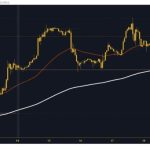
Despite a volatile start to the year marked by geopolitical tensions and lacklustre earnings, the Indian equity market has shown surprising resilience.
With retail and institutional investors returning to the fold, the Nifty and Sensex have staged a strong recovery over the past two months.
Raghvendra Nath, Managing Director of Ladderup Wealth Management, believes the Indian market has entered a “bullish zone.”
As per the analyst, the markets are seeing a period where multiple economic drivers such as government spending, private investment, and favourable macroeconomic conditions are aligning to support sustained growth.
In a wide-ranging conversation, Nath discusses the first-half market performance, the impact of geopolitical risks, expectations from the upcoming earnings season, and his outlook for the next 6 to 24 months. Edited excerpts:
Invezz: The first half of 2025 has been eventful for the markets. How would you sum up the performance so far?
The year — the calendar year — began on a pretty negative note. The third-quarter results had come in, and they were not great.
After the highs that the market had achieved in September 2024, valuations were overstressed, and speculative activity was at very high levels.
So, the market had started slipping from September onwards, and in the first two months — January as well as February — markets actually corrected very substantially.
Then in April, we had the Indo-Pak confilct, and the fourth-quarter results were also no different from the third quarter.
There was some hope that Q4 would be better than Q3, but that didn’t materialise.
So, the first four months went into dealing with volatility — first, the market correction, then the geopolitical risk.
But once the Indo-Pak conflict was settled and a ceasefire was announced, markets gradually got into the bullish zone. Initially, retail investors started coming in.
This time around, institutional investors were late. Foreign investors started increasing their exposure to India because they saw stability — political, geopolitical, and economic.
Domestic institutions, which were sitting on cash before and during the conflict, also began deploying that capital.
As we stand today, markets are looking in a pretty comfortable position.
The first four months were very volatile; the last two have been very strong, against all expectations.
The market is up a respectable 8–9% from December 31st, which is a very good run.
Invezz: During recent geopolitical flare-ups, including the Indo-Pak conflict and the Israel-Iran tensions, markets didn’t correct sharply. What explains this relative strength?
One is that — and this I’ve started noticing over the last few years — risks are getting priced by the market as they emerge, not in anticipation.
And this is something I have seen right from Trump’s presidency.
When he started announcing all those trade-related restrictions and crazy tariffs, the market started behaving more maturely.
Even after India destroyed those terror camps, the market reacted a little bit, but not too much.
That shows the maturity of the market. It also shows that no single investor group is influencing market behaviour in an aggressive manner.
It reflects the large presence of retail investors, domestic institutions, and foreign investors. Honestly, it is a sign of maturity more than anything else.
Invezz: Speaking of Trump, there’s talk of a US-India trade deal. How do you see past US trade policies and the possibility of a deal impacting Indian companies and sectors?
India has a large trade surplus with the US. The two main components of that are IT exports and pharma, and chemicals.
IT exports are services — they can’t be taxed. Pharma is critical to the US. The cost of healthcare there has consistently gone up.
A large section of Americans depends on government-run hospitals. Having generics supplied by Indian pharma companies helps keep those costs low.
If all generics were replaced with branded equivalents, healthcare costs would go up substantially. So, healthcare has been kept out of tariff discussions.
The rest — like gems, jewellery, textiles — are small, fragmented sectors. There is no single large exporter of clothing from India to the US.
That’s why markets didn’t react very negatively when those egregious tariffs — 34–35% — were announced. And I think the deal, when it happens, will be less than 34%, definitely.
So, from that egregious position, if it becomes a little more palatable, it’s more of a formality. It is not going to have any major impact either on the economy or on the markets.
Invezz: With the Q1 results season about to begin, what’s your expectation in terms of performance and sectoral trends?
Q1 will be marginally better than Q4, that is for sure. It’s going to be a very broad-based thing.
But nobody is expecting any dramatic change in corporate profitability anytime soon.
That dramatic change already happened in 2023–24 and 2024–25.
Now that we are in a normalised scenario — no base effect to positively or negatively tinker with percentages — we are not expecting any dramatic shift.
But there’s going to be a positive shift, and that’s emanating from multiple drivers of the economy. Government spending is one big driver.
Private sector investment is another. The startup world, the PLI schemes, interest rates, and inflation — all these are positive.
The government’s balance sheet is healthy; it’s spending a lot.
Foreign capital continues to flow in. Corporate balance sheets are strong, capacity utilisations are at 70–90%, and banks are ready to lend.
Retail lending is also expected to pick up again. So the drivers of corporate profitability are very much in place.
Invezz: What’s your market outlook for the next six months or even longer term? Any targets you’re working with?
I don’t have a specific price target, but globally, things are stabilising. The Middle East has been a volatile region, but even that is settling.
I’ll be very surprised if Israel ventures out and does something else. If that happens, it will spook the markets, but otherwise, we are heading into a period of geopolitical calm, more so for India.
India is becoming more self-sufficient. Inflation is low, interest rates are favourable, retail growth is high, and income growth is strong.
All these factors point to a sustained positivity in the equity markets.
So, I feel that the markets are going to easily reflect the earnings growth. I don’t see any correction in valuations at the broader level.
If earnings growth is 8–10%, the market should reward us with 8–10%. If earnings growth is higher, we could get more.
I won’t be surprised if valuations become more expensive by 4–5%. So if earnings grow at 10%, the market may give 13–15% returns.
And this will continue next year also.
If you take a two-year view — and the market goes up by 20–25% — you’re talking about the Sensex crossing 1,00,000.
That would be a big psychological mark, and I think that’s a distinct possibility in the next two years.
The post Interview: Indian markets show resilience amid global headwinds, says Ladderup Asset Management’s Raghvendra Nath appeared first on Invezz






